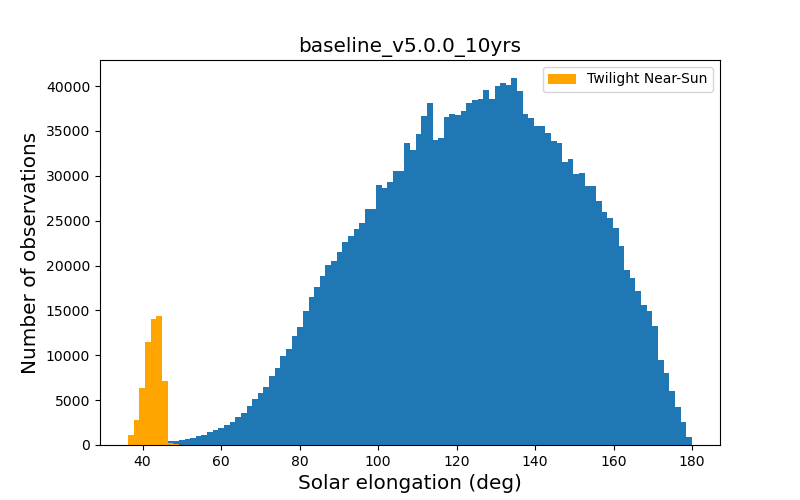Micro Surveys#
At this time, the SCOC has only endorsed one microsurvey to operate within LSST’s first year, the near-sun twilight microsurvey. If commissioning or early operations shows sufficient survey efficiency, an additional microsurvey covering a small area of sky northward of the WFD may be added. The addition of further microsurveys will be considered after the start of Operations.
The Near-Sun Twilight Microsurvey#
This microsurvey extends the discovery space for Solar System Objects to the region interior to the Earth, with the addition of observations at very low solar elongation.

The number of visits per pointing acquired for the near-sun twilight microsurvey, over ten years.
The near-sun twilight microsurvey operates during twilight, from -12 degree twilight up to approximately -18 degree twilight (but usually only up until about -15 degree twilight). Observations are taken in 15-second visits in riz filters. The visits are obtained in sets of four – quads – in order to be able to identify moving objects within each twilight before the objects become inaccessible due to their location on the sky.
Visits are focused on an area within 20 degrees of the ecliptic plane, and at solar elongations between 35 and 47 degrees. Less than 1% of the standard survey visits occur at solar elongations less than 68 degrees. The near-sun twilight observations occur at airmasses of 1.8 and greater.

Last Updated
Last Updated 2025/07/28